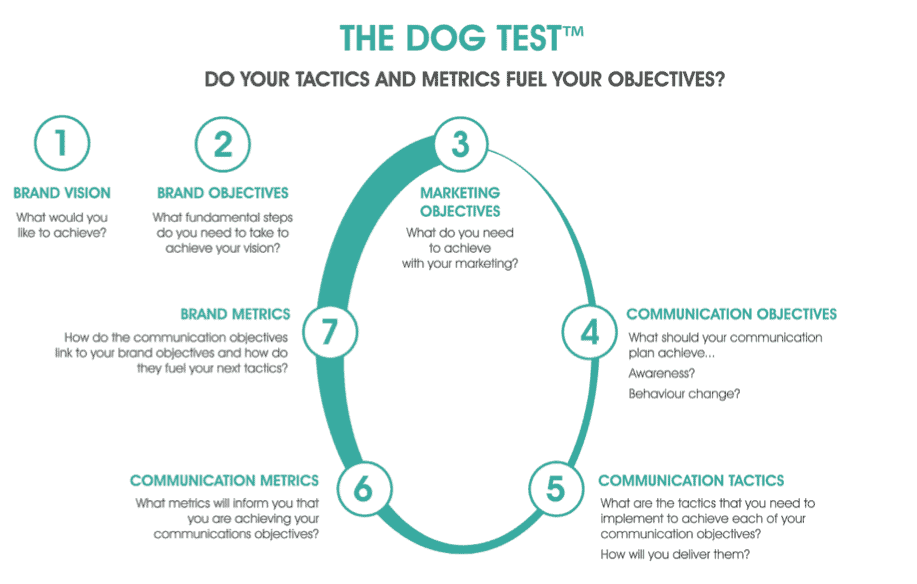
“Not everything that counts can be counted – and not everything that can be counted counts.” Einstein didn’t write a playbook on modern marketing metrics, but in the era of repurposed content, his words could easily fit the bill. How you measure marketing effectiveness is one of the biggest challenges facing pharmaceutical marketers. It’s an age- old question, but times – and communications channels – have changed.
Twenty years ago, as the business world adapted to the dotcom bubble, a senior pharma executive told me that the beauty of online marketing was that it was ‘so utterly measurable’. It sounded profound at the time. But hindsight suggests that her comment was both right and wrong in equal measure. Today, in a commercial environment that’s been redefined by technological innovation, marketing performance is increasingly measured against digital KPIs. That’s understandable. But as technology advances and channels proliferate, marketers are being bombarded with a slew of data that’s undermining their efforts to identify the metrics that matter. Digital marketing is indeed utterly measurable, but the question remains: are we measuring the wrong things? After all, not everything that counts can be counted – and not everything that can be counted counts.
KPI overload
The relentless growth of big data – supported by sophisticated analytics tools that allegedly illuminate customer insight – has left marketers across most industries frustrated by ‘KPI overload’. Sucked into a data arms race, many have been hoodwinked into believing that ‘bigger is better’, and have set about measuring everything in the hope of uncovering a metric that justifies campaign decisions and impresses their boss. It’s a scattergun approach that drives huge inefficiency and muddled thinking.
The range of KPIs is similarly bewildering. The traditional concept of measuring ROI – a dissertation in its own right – has been joined by myriad metrics: cost per lead per channel, conversion rate (for sales), conversion rate (for leads), revenue per lead by source, return on marketing spend, reach and frequency data, transaction-level data, SKU and product-level metrics, geo-locational sales data. The list is seemingly endless, but the data comes with a health warning: not all measurements are useful. What’s more, despite the promise that smart analytics and machine learning tools make it easier to correlate online activity with offline behaviours, making sense of the numbers to inform strategic clarity is more rocket science than data science.
Many of the digital metrics used in conventional e-Commerce do not translate to pharmaceuticals. The complexity of the industry’s engagement model and the diversity of its customer-base makes it difficult to establish explicit links between the interaction and the sale. How do you measure conversion when the decision to prescribe is influenced by so many uncontrollable variables and so distant from the commercial interaction? We’re not selling fizzy drinks. The standard metrics of consumer retail are a million miles from pharma, which explains why the industry appears so far behind others when it comes to measuring the effectiveness of digital marketing.
Until relatively recently, many pharma companies relied on primitive metrics like page impressions, clicks and open rates – generating a density of information that didn’t really provide any valuable intelligence. One major multinational says it’s getting closer to harder metrics that are ‘more indicative of conversion and transaction’ as opposed to just measuring interest. However, the vagaries of health regulations make it difficult for pharma
to replicate Amazon-like models of single-click ordering and the behavioural insights they enable. Despite this, efforts to unlock metrics that get closer to the decision-making process are intensifying. And they must. Because as tech giants like Google, Apple and Amazon prepare to disrupt healthcare, and challenge the old guard, the pharmaceutical industry cannot afford to waste its resources on meaningless metrics that create avoidable inefficiency. So where does it go from here?
Purpose-led approach
The best approach may be to take a step back and look at the bigger picture. “Pharma widely accepts that it struggles to measure digital marketing effectiveness – but perhaps it’s starting from the wrong place,” said Dennis O’Brien, CEO, Lucid Group. “For years, companies have focused heavily on developing ‘digital strategy’ and, as data opportunities have increased with technological advancement, those strategies have spawned a dizzying range of digital KPIs. However, in many cases, those KPIs have been determined by the technology rather than customer need. It’s the wrong way round. Digital KPIs should be driven by – and feed into – the marketing strategy. We all know that pharmaceutical marketing differs hugely from other industries, but the principles of purpose-led, customer-focused marketing translate across every sector. Do we think Coca Cola has digital KPIs? Or does the company just have key marketing objectives that digital feeds into – and metrics that shoot for the same goals? Too often pharma companies start with the ‘tactic’ and brief their agencies to build interventions that don’t align with an overarching purpose.

And they apply metrics that measure the adoption of that tactic rather than its impact against marketing objectives. But downloads and open rates won’t tell you if a customer has changed practice or perception. They just tell you whether the channel has been used. We can do so much more.
“Digital tools not only give us an amazing ability to reach and connect with our target audiences, they enable us to understand what customers are doing in ways that have never previously been possible. If we get it right we can, for the first time, ‘close the loop’ and say: is this working and, if it isn’t, how can we fix it? However, if we don’t build-in metrics that measure impact in areas of customer needs – the foundation of good marketing strategies – we’re squandering a huge opportunity.”
The wider world agrees. A Bain White Paper on measuring the ‘metrics that matter’ said the most useful metrics ‘align with and balance corporate priorities’. However, primitive KPIs – like time on page and cost-per-action – typically sit in isolation from company objectives and rarely provide a meaningful barometer of marketing effectiveness. As the former dotcom CEO, Seth Godin, said: “Measurement is fabulous. Unless you’re busy measuring what’s easy to measure as opposed to what’s important.” Have pharma companies progressed their metrics beyond the ‘low hanging fruit’? It’s hard to say. But if your digital KPIs don’t link back to marketing objectives, there’s a chance you’re measuring tactical implementation rather than the things that will make a difference. So how do you do it?
End-to-end metrics
“The key is to establish – right at the outset when you’re scoping your digital tools – the marketing goal you’re trying to meet through the intervention,” says Nigel Horn, Managing Director, Bluedog – now part of Lucid Group. “What are you trying to achieve? Do you want to raise awareness or drive conversion? Are you looking to change clinical behaviour or to shift the perception of your brand? Crude metrics like ‘number of visits’ will only confirm whether you’re reaching your target audience. Getting to the next level – understanding what they do next – requires a deeper investment in more sophisticated metrics. As an industry, we need to develop end-to-end metrics that allow us to track customer behaviour beyond ‘reach’ and measure the impact of an interaction. At present, pharma hasn’t really embraced the concept of closed-loop marketing; we’re stuck measuring the success of tactical implementation. It’s a missed opportunity, because none of the current digital KPIs actually help you move forward.”
So what could an end-to-end model look like? “In simple terms, closed-loop metrics go beyond current thinking whereby marketers marry a digital tactic with a digital metric and don’t know where to go next,” said Nigel. “End-to-end metrics cover a broader, circular journey; it’s starts with establishing the marketing objective, then cascades into marketing tactics, tactical metrics, follow-on metrics and ultimate metrics. Crucially, everything circles back to the marketing goal. The closed-loop approach allows us to measure not only whether we’re touching our target customers, but also, crucially, whether we’re influencing them in the ways we need to change behaviour. If we’re not, we have meaningful data that can inform where and how we need to change that interaction – rather than blindly pursuing tactics that plainly aren’t working. The most cutting-edge examples of closed-loop marketing are often in FMCG markets, where data analytics unlocks a deeper understanding of target audiences and enables them to predict and influence future behaviours. Although customer engagement is very different in consumer markets, there’s no reason why the same approach cannot be applied in pharma.”
Measure for measure
With a clear strategic focus and proactive alignment with marketing objectives, digital tactics and their associated metrics can be designed to measure the true drivers of brand success. Developing them may require companies to rethink their focus on digital KPIs and invest in additional tools that take customer insight to another level. The benefits could be significant.
“Meeting crude tactical KPIs may make you look good at your next appraisal, but are the outcomes as impressive in the crucial arena of patient care?” said Dennis O’Brien. “Ultimately, everything comes down to patient value and purpose. At the end of the day, the question is simple: what do we want to be celebrating? Are we satisfied if our website gets more hits than anyone else? Or do we want to celebrate the fact that we made a difference
– and are able to prove it? Digital provides a wonderful opportunity for pharma to capture data that demonstrates its innovations are making a difference. But only if companies start counting the things that count.”




